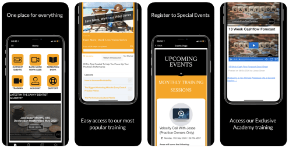Having a strong website is an important part of dental practice ownership.
Patients are increasingly turning to technology and looking online to research their options when it comes to selecting a practice. It’s often one of their first experiences with you, and it can leave a lasting impression.
So in order to convert curious prospects into patients who pay, stay, and refer, you need to have a few website fundamentals in place.
1. Design your site with your ideal patient in mind
We’ve spoken at length about the importance of defining your ideal patient and tailoring all marketing efforts towards them.
Your website copy and even design will need to speak to the hopes, fears, needs, and desires of your ideal patient if you ever hope to see them in your practice.
2. Have a fast-loading website
If a website takes too long to load, people tend to just click off and move to another site.
In fact, research shows that 40% of people won’t wait any longer than three seconds for a site to load!
You want your hard-earned traffic to actually stick around and see your content, so be sure your site speed is nice and healthy in order to convert visitors.
3. Optimise your site for mobile
Recent figures show 70% of your web traffic is likely to come from mobile phones, so it’s crucial that your website renders on mobile devices.
Whether you build a mobile-specific site or create a responsible website that detects the device and adapts accordingly, either will work to ensure people can have a great experience on their phones.
4. Use video and images effectively
People aren’t going to click on your site and read a wall of text with a fine-tooth comb – so be sure to use imagery that enhances the experience and tells a story.
Pictures tell a thousand words, and can be used to show your friendly team, modern equipment, the feel of your waiting room, the fun stuff you have for kids – you can really get creative with it.
It’s a great way to get a certain look and feel across without lengthy, wordy explanations.
5. Have a clear Call To Action
Having a Call To Action (or CTA) is an absolute fundamental of all direct-response marketing. Once people are on your site, you need to let them know what to do next.
Whether it’s “call to book an appointment” or an online booking system – you want to direct your traffic to the next logical step.
Otherwise, you risk losing them…
6. Capture your visitors details
If someone visits your website without following your CTA, you need to be able to capture their data so they’re not lost forever.
You may well have invested good time and money into getting web traffic, so you don’t want that work to be lost.
Whether it’s a form to get their details or you’re using a Pixel to re-target, you can then follow up to keep them in your system.
7. Make sure your website is built around what people want to know
Too often, websites are made with content that the creator thinks people want to know, without actually speaking to the real needs of the visitors.
It’s a bit like fishing – you fish using worms for bait right? Even though you may prefer a piece of chocolate, you know that you and the fish have different needs and wants and so you tailor your bait accordingly.
Consider what the visitor wants, and don’t assume that you necessarily want the same things.
P.S Want to scale your dental practice and take your profits to 7 figure success?
Me and my team can work with you directly to get you there! Simply book in your FREE 1:1
strategy session, and we can get started on a game plan for you and your practice.



